formerly eScholarship Editions


|
|
|
|
Browse by Title
All Titles | Public Titles
A | B | C | D | E | F | G | H | I | J | K | L | M | N | O | P | Q | R | S | T | U | V | W | Y | Z | OTHERYour request for titles beginning with H found 72 book(s). | Modify Search | Displaying 61 - 72 of 72 book(s) | |
| 61. | 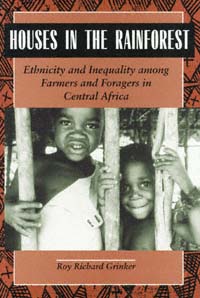 | Title: Houses in the rain forest: ethnicity and inequality among farmers and foragers in Central Africa Author: Grinker, Roy Richard 1961- Published: University of California Press, 1994 Subjects: Anthropology | African Studies | Cultural Anthropology Publisher's Description: This is the first ethnographic study of the farmers and foragers of northeastern Zaire since Colin Turnbull's classic works of the 1960s. Roy Richard Grinker lived for nearly two years among the Lese farmers and their long-term partners, the Efe (Pygmies), learned their languages, and gained unique insights into their complex social relations and ethnic identities. By showing how political organization is structured by ethnic and gender relations in the Lese house, Grinker challenges previous views of the Lese and Efe and other farmer-forager societies, as well as the conventional anthropological boundary between domestic and political contexts. [brief] Similar Items |
| 62. | 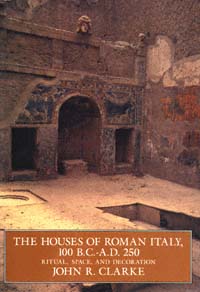 | Title: The houses of Roman Italy, 100 B.C.-A.D. 250: ritual, space, and decoration Author: Clarke, John R 1945- Published: University of California Press, 1992 Subjects: Classics | Art and Architecture | Architectural History | Art History Publisher's Description: In this richly illustrated book, art historian John R. Clarke helps us see the ancient Roman house "with Roman eyes." Clarke presents a range of houses, from tenements to villas, and shows us how enduring patterns of Roman wall decoration tellingly bear the cultural, religious, and social imprints of the people who lived with them.In case studies of seventeen excavated houses, Clarke guides us through four centuries of Roman wall painting, mosaic, and stucco decoration, from the period of the "Four Styles" (100 B.C. to A.D. 79) to the mid- third century. The First Style Samnite House shows its debt to public architecture in its clear integration of public and private spaces. The Villa of Oplontis asserts the extravagant social and cultural climate of the Second Style. Gemlike Third-Style rooms from the House of Lucretius Fronto reflect the refinement and elegance of Augustan tastes. The Vettii brothers' social climbing helps explain the overburdened Fourth-Style decoration of their famous house. And evidence of remodelling leads Clarke to conclude that the House of Jupiter and Ganymede became a gay hotel in the second century.In his emphasis on social and spiritual dimensions, Clarke offers a contribution to Roman art and architectural history that is both original and accessible to the general reader. The book's superb photographs not only support the author's findings but help to preserve an ancient legacy that is fast succumbing to modern deterioration resulting from pollution and vandalism. [brief] Similar Items |
| 63. | 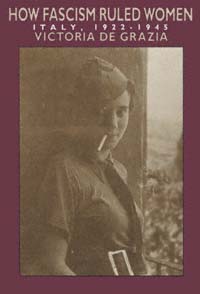 | Title: How fascism ruled women: Italy, 1922-1945 Author: De Grazia, Victoria Published: University of California Press, 1992 Subjects: History | European History | Women's Studies Publisher's Description: Italy has been made; now we need to make the Italians," goes a familiar Italian saying. Mussolini was the first head of state to include women in this mandate. How the fascist dictatorship defined the place of women in modern Italy and how women experienced the Duce 's rule are the subjects of Victoria de Grazia's new work. De Grazia draws on an array of sources - memoirs and novels, the images, songs, and events of mass culture, as well as government statistics and archival reports. She offers a broad yet detailed characterization of Italian women's ambiguous and ambivalent experience of a regime that promised modernity, yet denied women emancipation.Always attentive to the great diversity among women and careful to distinguish fascist rhetoric from the practices that really shaped daily existence, the author moves with ease from the public discourse about femininity to the images of women in propaganda and commercial culture. She analyzes fascist attempts to organize women and the ways in which Mussolini's intentions were received by women as social actors. The first study of women's experience under Italian fascism, this is also a history of the making of contemporary Italian society. [brief] Similar Items |
| 64. | 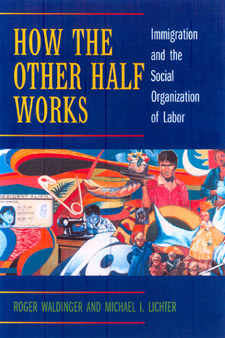 | Title: How the other half works: immigration and the social organization of labor Author: Waldinger, Roger David Published: University of California Press, 2003 Subjects: Sociology | Urban Studies | Ethnic Studies | Labor Studies | Immigration | Chicano Studies | Social Problems | Urban Studies | California and the West | California and the West Publisher's Description: How the Other Half Works solves the riddle of America's contemporary immigration puzzle: why an increasingly high-tech society has use for so many immigrants who lack the basic skills that today's economy seems to demand. In clear and engaging style, Waldinger and Lichter isolate the key factors that explain the presence of unskilled immigrants in our midst. Focusing on Los Angeles, the capital of today's immigrant America, this hard-hitting book elucidates the other side of the new economy, showing that hiring is finding not so much "one's own kind" but rather the "right kind" to fit the demeaning, but indispensable, jobs many American workers disdain. [brief] Similar Items |
| 65. | 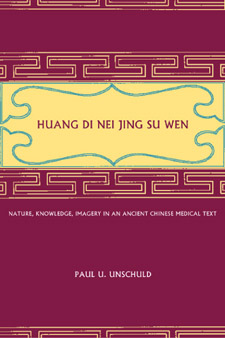 | Title: Huang Di nei jing su wen: nature, knowledge, imagery in an ancient Chinese medical text, with an appendix, The doctrine of the five periods and six qi in the Huang Di nei jing su wen Author: Unschuld, Paul U. (Paul Ulrich) 1943- Published: University of California Press, 2003 Subjects: Anthropology | Asian Studies | Medical Anthropology | China | History of Medicine Publisher's Description: The Huang Di nei jing su wen, known familiarly as the Su wen, is a seminal text of ancient Chinese medicine, yet until now there has been no comprehensive, detailed analysis of its development and contents. At last Paul U. Unschuld offers entry into this still-vital artifact of China's cultural and intellectual past. Unschuld traces the history of the Su wen to its origins in the final centuries B.C.E., when numerous authors wrote short medical essays to explain the foundations of human health and illness on the basis of the newly developed vessel theory. He examines the meaning of the title and the way the work has been received throughout Chinese medical history, both before and after the eleventh century when the text as it is known today emerged. Unschuld's survey of the contents includes illuminating discussions of the yin-yang and five-agents doctrines, the perception of the human body and its organs, qi and blood, pathogenic agents, concepts of disease and diagnosis, and a variety of therapies, including the new technique of acupuncture. An extensive appendix, furthermore, offers a detailed introduction to the complicated climatological theories of Wu yun liu qi ("five periods and six qi"), which were added to the Su wen by Wang Bing in the Tang era. In an epilogue, Unschuld writes about the break with tradition and innovative style of thought represented by the Su wen. For the first time, health care took the form of "medicine," in that it focused on environmental conditions, climatic agents, and behavior as causal in the emergence of disease and on the importance of natural laws in explaining illness. Unschuld points out that much of what we surmise about the human organism is simply a projection, reflecting dominant values and social goals, and he constructs a hypothesis to explain the formation and acceptance of basic notions of health and disease in a given society. Reading the Su wen, he says, not only offers a better understanding of the roots of Chinese medicine as an integrated aspect of Chinese civilization; it also provides a much needed starting point for discussions of the differences and parallels between European and Chinese ways of dealing with illness and the risk of early death. [brief] Similar Items |
| 66. | 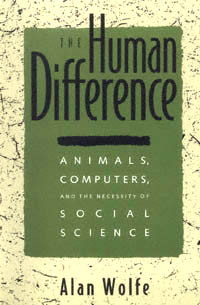 | Title: The human difference: animals, computers, and the necessity of social science Author: Wolfe, Alan 1942- Published: University of California Press, 1993 Subjects: Sociology | Social Theory | Political Theory | Postcolonial Studies | Religion | Christianity Similar Items |
| 67. | 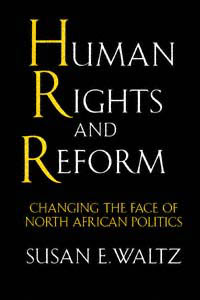 | Title: Human rights and reform: changing the face of North African politics Author: Waltz, Susan Eileen Published: University of California Press, 1995 Subjects: Politics | History | Middle Eastern Studies | Middle Eastern History | African History | African Studies Publisher's Description: Independence from colonial rule did not usher in the halcyon days many North Africans had hoped for, as the new governments in Morocco, Tunisia, and Algeria soon came to rely on repression to reinforce and maintain power. In response to widespread human rights abuses, individuals across the Maghrib began to form groups in the late 1970s to challenge the political practices and structures in the region, and over time these independent human rights organizations became prominent political actors. The activists behind them are neither saints nor revolutionaries, but political reformers intent on changing political patterns that have impeded democratization.This study, the first systematic comparative analysis of North African politics in more than a decade, explores the ability of society, including Islamist forces, to challenge the powers of states. Locating Maghribi polities within their cultural and historical contexts, Waltz traces state-society relations in the contemporary period. Even as Algeria totters at the brink of civil war and security concerns rise across the region, the human rights groups Susan Waltz examines implicitly challenge the authoritarian basis of political governance. Their efforts have not led to the democratic transition many had hoped, but human rights have become a crucial new element of North African political discourse. [brief] Similar Items |
| 68. | 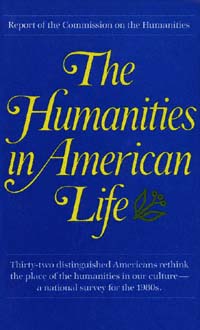 | Title: The humanities in American life: report of the Commission on the Humanities Author: Commission on the Humanities (1978- ) Published: University of California Press, 1980 Subjects: Social Science Similar Items |
| 69. |  | Title: The hydrogen jukebox: selected writings of Peter Schjeldahl, 1978-1990 Author: Schjeldahl, Peter Published: University of California Press, 1991 Subjects: Literature | Art Criticism Similar Items |
| 70. | 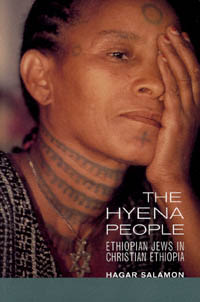 | Title: The hyena people: Ethiopian Jews in Christian Ethiopia Author: Salamon, Hagar Published: University of California Press, 1999 Subjects: Jewish Studies | Anthropology | African Studies Publisher's Description: The Jews (Falasha) of northwestern Ethiopia are a unique example of a Jewish group living within an ancient, non-Western, predominantly Christian society. Hagar Salamon presents the first in-depth study of this group, called the "Hyena people" by their non-Jewish neighbors. Based on more than 100 interviews with Ethiopian immigrants now living in Israel, Salamon's book explores the Ethiopia within as seen through the lens of individual memories and expressed through ongoing dialogues. It is an ethnography of the fantasies and fears that divide groups and, in particular, Jews and non-Jews.Recurring patterns can be seen in Salamon's interviews, which thematically touch on religious disputations, purity and impurity, the concept of blood, slavery and conversion, supernatural powers, and the metaphors of clay vessels, water, and fire. The Hyena People helps unravel the complex nature of religious coexistence in Ethiopia and also provides important new tools for analyzing and evaluating inter-religious, interethnic, and especially Jewish-Christian relations in a variety of cultural and historical contexts. [brief] Similar Items |
| 71. | 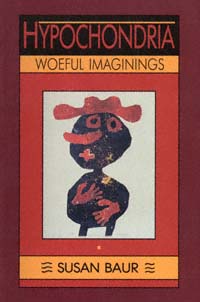 | Title: Hypochondria: woeful imaginatings Author: Baur, Susan Published: University of California Press, 1989 Subjects: Medicine | Science Publisher's Description: Writing with grace, humor, and an expert's eye for revealing detail, Susan Baur illuminates the processes by which hypochondriacs come to adopt and maintain illness as a way of life. Similar Items |
| 72. |  | Title: Hysteria beyond Freud Author: Gilman, Sander L Published: University of California Press, 1993 Subjects: History | Literature | Women's Studies | Psychiatry | Medicine Publisher's Description: "She's hysterical." For centuries, the term "hysteria" has been used by physicians and laymen alike to diagnose and dismiss the extreme emotionality and mysterious physical disorders presumed to bedevil others - especially women. How has this medical concept assumed its power? What cultural purposes does it serve? Why do different centuries and different circumstances produce different kinds of hysteria?These are among the questions pursued in this absorbing, erudite reevaluation of the history of hysteria. The widely respected authors draw upon the insights of the new social and cultural history, rather than Freudian psychoanalysis, to examine the ways in which hysteria has been conceived by doctors and patients, writers and artists, in Europe and North America, from antiquity to the early years of the twentieth century. In so doing, they show that a history of hysteria is a history of how we understand the mind. [brief] Similar Items |